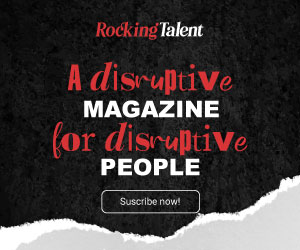L&D expert Mark Spratt discusses the top priorities for HR teams as they try to help their organisations stay in business and keep everyone safe
Since the start of the 2020 global health crisis, the Josh Bersin Academy has been in dialogue with HR executives from more than 160 companies around the world. We have organised these leaders into multiple ‘Big Reset’ working groups that meet each week to discuss organisational responses, strategies, and challenges related to the coronavirus pandemic.
Shared by most leaders is a new focus on employee wellbeing – demonstrated through empathy, support, and connectedness. This new emphasis, typically being led by HR, has put many CEOs into the role of ‘chief empathy officer’. Senior leaders are actively involved in virtual town hall meetings, producing videos from their homes, and issuing frequent updates – all to keep employees informed and updated.
Companies are also re-evaluating all aspects of employee wellbeing. In addition to reviewing existing benefits, many organisations have added new offerings for physical, mental, and financial fitness. Additionally, we are seeing more focus on family life and developing many initiatives to directly support employees’ families. Examples include setting up tutoring programmes for children, creating social channels around special interests, such as cooking, hosting movie nights, and offering special support for those employees dealing with aging parents or children now schooling from home.
Multi-functional HR
HR teams must now broaden their areas of expertise, as they need to work much more closely with other functional areas of the business such as facilities, IT, legal, and finance. Many HR teams are also finding that their scope of responsibility has expanded, and in some cases, they’ve been moved into completely new roles. HR professionals have to learn about workplace safety, public health, and facilities design. They have to deal with issues like employee commutes, restroom, toilet and cafeteria policies, and a myriad of legal issues created by the pandemic.
In many ways, the pandemic is forcing us to tear down our functional silos and work more closely together than ever before.
Throughout the pandemic, most organisations have continued to hire, onboard, train, manage and promote their people. Recruiting and onboarding are now being done digitally, often with great success. Global firms such as L’Oréal, Microsoft, Epic, and Atlassian are now routinely using video hiring interviews, managing internships remotely, and conducting online onboarding.
Agile HR
Executives are very engaged in how rapidly their organisations have successfully adopted digital tools for remote work, recruiting, onboarding, collaboration, and communications, as well as for surveys and check-ins. Tools for daily attestation, virus response, remote onboarding, team collaboration, and real-time information were implemented in days or weeks.
A PepsiCo executive described this approach as ‘being scrappy’ to solve pressing problems quickly. Leaders have seen that employees can work together with focus and solve problems in days or weeks, rather than months or even years. Nextdoor, for example, developed a new COVID communication portal using an existing onboarding system over just one weekend.
Along with this agility, companies are now pushing forward on the goal of creating more distributed organisational charts with empowered employees, operating under shared policies and guidelines. DBS Singapore, for example, has inaugurated country-located crisis teams that bring multi-functional leaders together.
Homeworking
Before March, about half of the companies we surveyed did not permit work at home. Today, almost every company has some portion of its workforce still working remotely. As a result, new work-at-home policies have been created and new tools have been rapidly adopted. We’re also seeing more flexibility in work hours to help people juggle commitments.
Of course, remote working has its issues. HRs and CHROs have been looking at ways to make work easier while maintaining productivity. Many companies set aside ‘no-meeting times’ so people could focus, rest, and re-energise themselves instead of becoming drained by video conferencing all day, for example.
Policies need to be clear
One of the main findings that come from our working groups is the need for clear communications. After all, a whole series of new workplace protocols are being developed, from areas such as workplace operations, workplace technology, safety and wellbeing, service delivery and execution, logistics, and culture. There are new protocols for testing, identifying vulnerable employees.
Company leaders are realising they must organise and manage for continuous uncertainty. To help employees adjust, HR leaders must communicate a sense of optimism and competence even when conditions continue to change. Companies are using coaches, psychologists, and many new tools to help employees take a positive view of the future.
We’ve heard countless examples of how employees have come together through a shared sense of purpose and collaborated to develop innovative solutions to keep their companies viable. Let’s hope we all can continue to leverage the positives of this crisis for longer-term business success.
Learn more about the working group findings discussed in this article by downloading your free copy of The Big Reset Playbook: What’s Working Now.
MARK SPRATT | VP of client support at the Josh Bersin Academy





